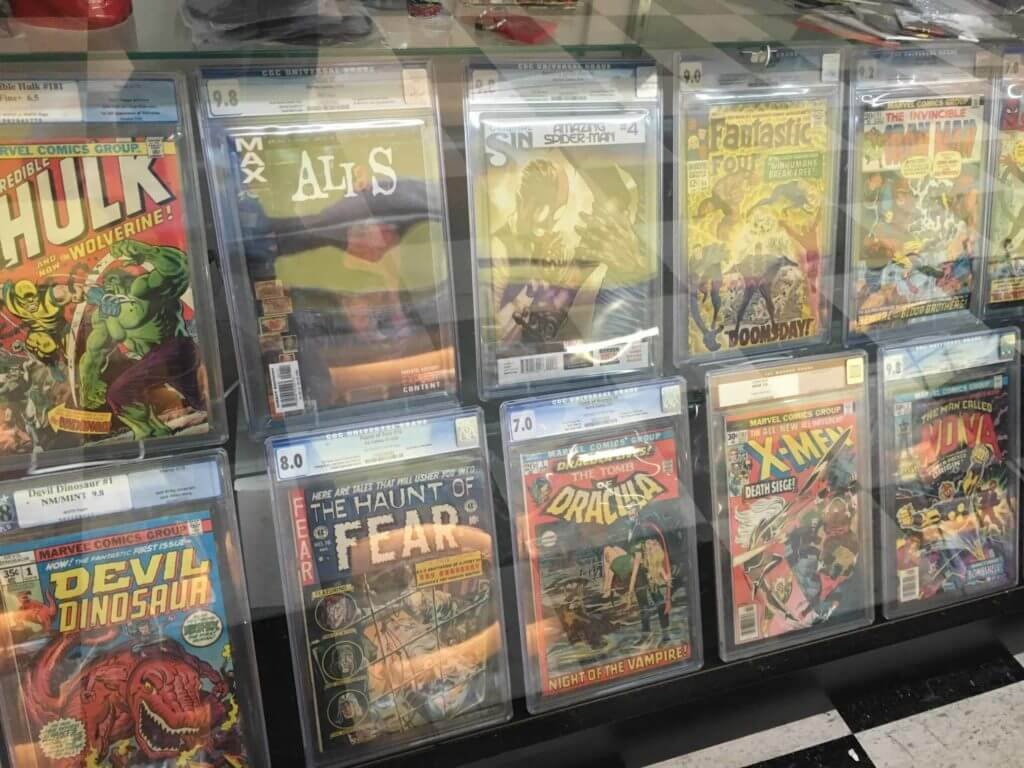Call it an observation, but the frenzy surrounding comic books has reached an all-time high these days. Ever since Marvel and DC heavyweights started gracing the silver screen, an increasing number of people have tried their hand at comic book collection.
Make no mistake: people don’t always buy comic books to read about the latest battle between Superman and Lex Luthor. By all accounts, collecting graded comic books is a worthwhile investment. A few back issue comics are known to make bank repeatedly, based on their condition.
Comic book collection may seem confusing at first. But as always, there’s a method to all the madness. Let’s look at ten things every uninitiated collector should know before they begin their quest.
Table of Contents
First Appearances Stay Winning
Any comic book containing the first appearance of a beloved character is pure gold. Let’s see a few examples:
A copy of Amazing Fantasy #15, which launched the friendly neighborhood Spider-Man, recently sold for a whopping $3.6 million!
Before this, the exceedingly rare Action Comics #1– Superman’s debut comic- went for $3.25 million.
Detective Comics #27, the legendary copy which introduced Batman to the world, was auctioned for a historic $1.5 million, the highest price ever paid for a Batman comic.
Buyers are always willing to pony up big amounts for first appearances. Bonus points if it’s an old, rare copy. If you have plans to sell your collection in the future, be sure to stock it with a few debut editions!
Physical Comic Book Stores Aren’t Your Only Source
Scouring through your local comic book shop will only get you so far. To expand your collection, you’ll have to spread your net a bit wider. Think garage sales and flea markets, among other places. You can also browse through a reputable online graded comic book store to see what it has in stock.
Several Factors Affect the Value of Comic Books
From an investment standpoint, several criteria are used to determine the potential value of a comic. These include:
-
- Duration of publishing
- The popularity of the writers and artists
- Adaptations
- Key issues
- Condition
Like any other long-term investment, collecting comic books won’t make you a millionaire overnight. So, in case you’re looking to make a quick buck, this may not be the path for you. However, if you have a genuine interest in graded comic books and are willing to wait it out, you can expect good results down the line!

Comic Book Grading is All-Critical
As a collector, one of the first things you’ll need to understand is the comic books grading process. When a company like the CGC or the CBCS receives your comic, they verify and authenticate it before assigning a grade. Generally, the grade depends on the overall quality of the book. A 10.0 Gem Mint comic is a moneymaker in every way. On the other hand, a 0.5 Poor is flawed and not worth a lot.
Spinoff Series Deserve a Shot
Sure, it’s always a good idea to follow a character’s primary storyline. And, in some cases, there’s nothing else to pursue. But cult-favorites such as Superman and Spider-Man may have several spinoffs that are worth a look-see.
For example, die-hard Batman fans can increase their comic intake by turning to series like Gotham City, Robin, Gotham Academy, Arkham Asylum, and so on. Not all of these titles feature the Dark Knight front and center, but can certainly add to your stash.
Paper Comics All the Way
While digital comics do have a ton of benefits, they don’t hold a candle to paperback collectibles. This is because:
They cannot be traded.
They will not increase in value over time.
Simply put, if you’re trying to create a graded comic book collection that builds over time, it’s best if you stick to physical copies of your favorite issues. And, in case you’re on a tight budget, you can save money by purchasing a trade paperback (TPB) comprising five issues in one volume.
Issue Numbers Are Largely Meaningless
It can be intimidating when a comic title you’re eyeing is already on its 300th release. But don’t let that scare you, because comic book numbering is pretty arbitrary nowadays. The only thing you should consider is where particular storylines begin and end. That’s it!
Proper Storage is Vital
No matter how great your collection is, it won’t mean anything if you don’t store it well. Keep the books in containers or clean plastic sleeves to minimize tearing. Try not to expose them to excess heat or moisture. The better the maintenance, the more money you can get for the comics!
It’s Ideal to Start Small
You may want to buy a bunch of comic book subscriptions at once, but it’s best to start small- ideally, with a single series. If that piques your interest, you can bag a subscription to latch on. There’s no need to rush: take your time to invest in a narrative you enjoy.
Networking Pays Off
Believe it or not, comic collecting is a great way to make new friends. Make it a point to network with other collectors who frequent your local comic stores or conventions. This way, you’ll be able to trade graded comic books within your circle.
The Bottom Line
There’s only one rule to collecting comics: you must have fun with it. These tips are meant to help collectors find their feet in the industry. Hopefully, you can use these pointers to your advantage and build an awe-inspiring collection hassle-free!










